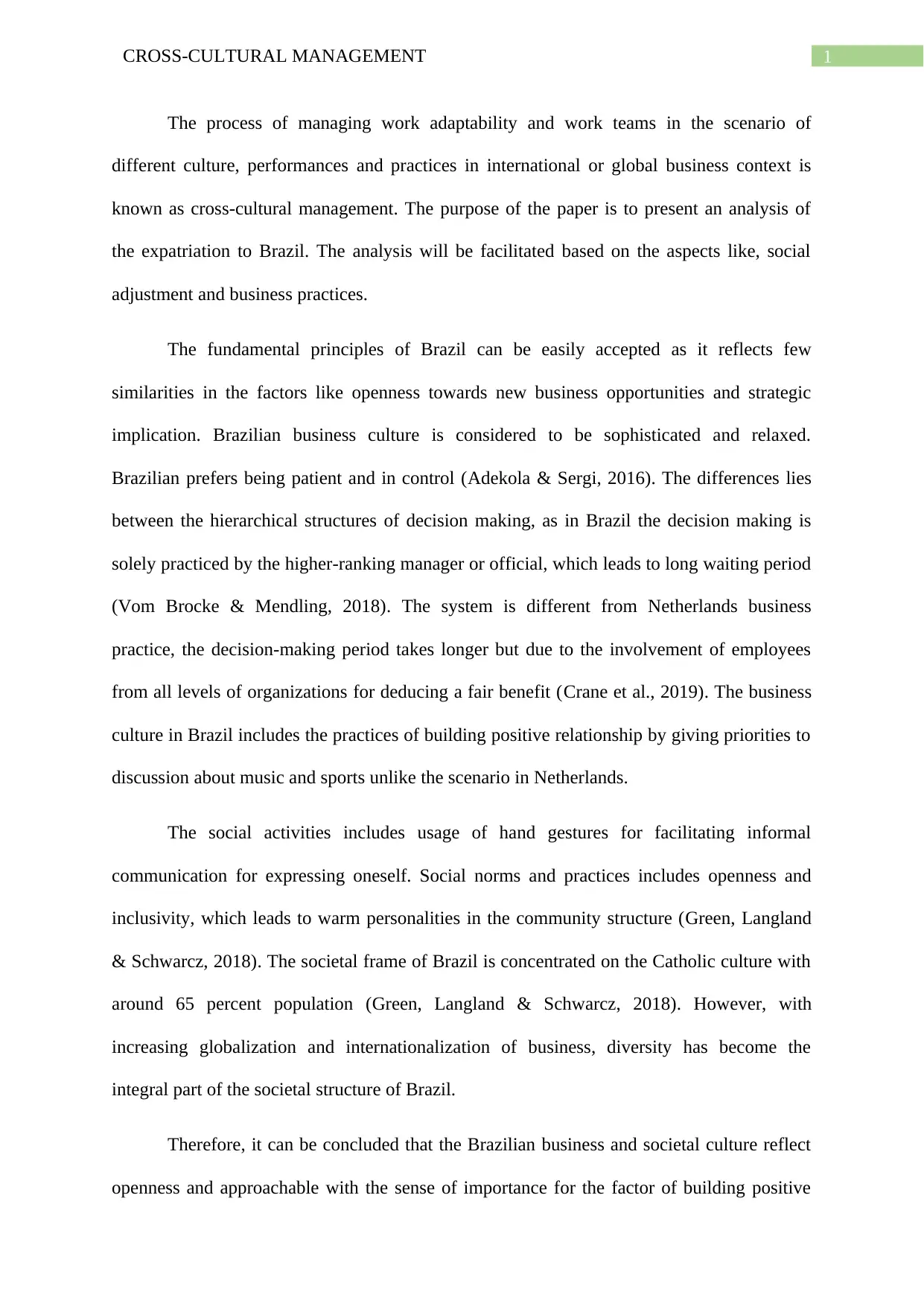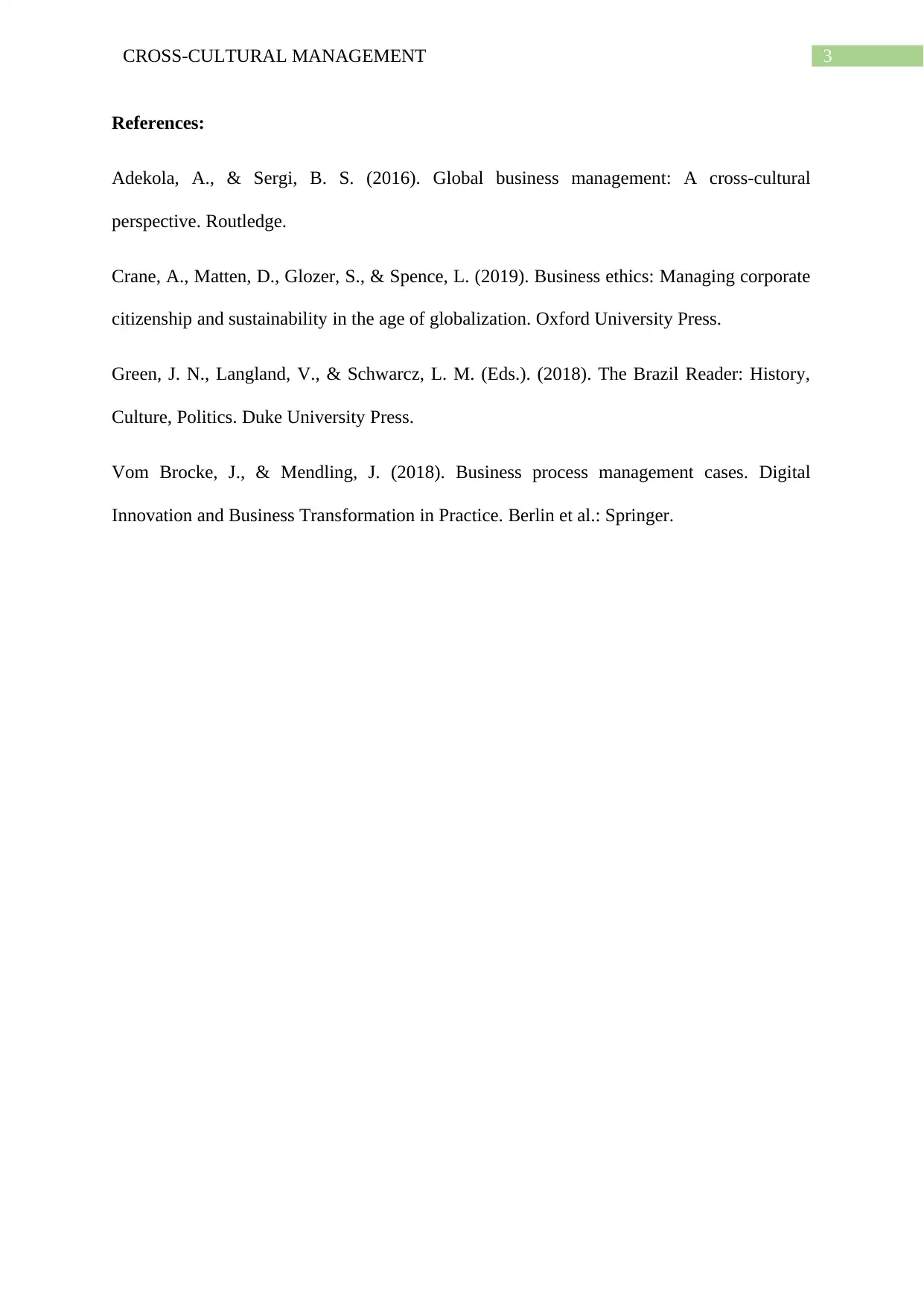Cross-Cultural Management: Expatriation Challenges in Brazil
VerifiedAdded on 2023/04/21
|4
|529
|334
Essay
AI Summary
This essay provides an analysis of cross-cultural management in the context of expatriation to Brazil, focusing on social adjustment and business practices. It highlights the similarities and differences between Brazilian and Dutch business cultures, emphasizing Brazil's sophisticated yet relaxed approach, the hierarchical decision-making process, and the importance of building positive relationships. The essay also touches on the social norms and practices of Brazil, including openness, inclusivity, and the influence of Catholic culture, while acknowledging the increasing diversity due to globalization. Ultimately, the analysis concludes that Brazilian business and societal cultures are approachable and prioritize positive relationships in the work environment.
1 out of 4





![[object Object]](/_next/static/media/star-bottom.7253800d.svg)